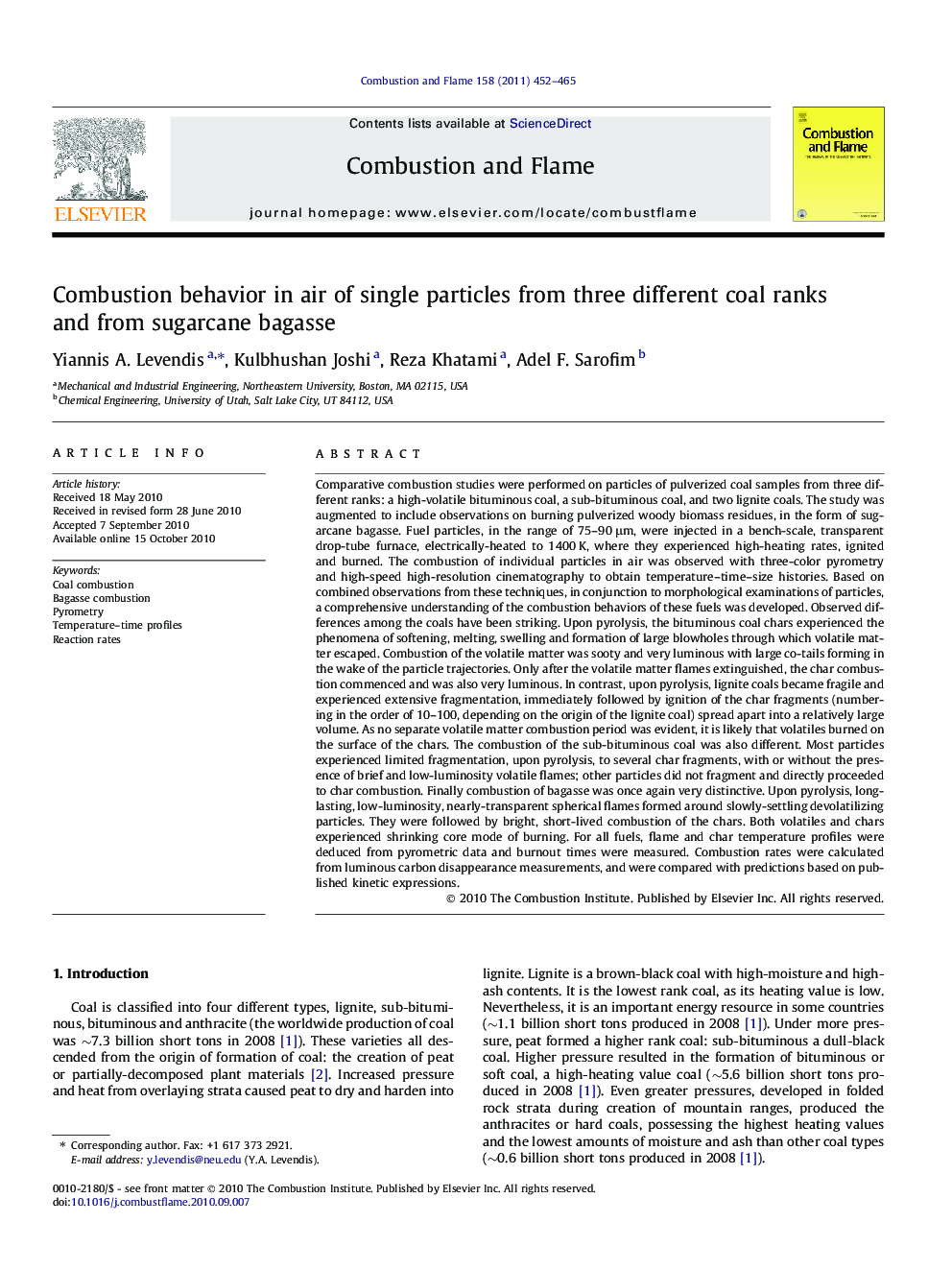| کد مقاله | کد نشریه | سال انتشار | مقاله انگلیسی | نسخه تمام متن |
|---|---|---|---|---|
| 169224 | 457985 | 2011 | 14 صفحه PDF | دانلود رایگان |

Comparative combustion studies were performed on particles of pulverized coal samples from three different ranks: a high-volatile bituminous coal, a sub-bituminous coal, and two lignite coals. The study was augmented to include observations on burning pulverized woody biomass residues, in the form of sugarcane bagasse. Fuel particles, in the range of 75–90 μm, were injected in a bench-scale, transparent drop-tube furnace, electrically-heated to 1400 K, where they experienced high-heating rates, ignited and burned. The combustion of individual particles in air was observed with three-color pyrometry and high-speed high-resolution cinematography to obtain temperature–time–size histories. Based on combined observations from these techniques, in conjunction to morphological examinations of particles, a comprehensive understanding of the combustion behaviors of these fuels was developed. Observed differences among the coals have been striking. Upon pyrolysis, the bituminous coal chars experienced the phenomena of softening, melting, swelling and formation of large blowholes through which volatile matter escaped. Combustion of the volatile matter was sooty and very luminous with large co-tails forming in the wake of the particle trajectories. Only after the volatile matter flames extinguished, the char combustion commenced and was also very luminous. In contrast, upon pyrolysis, lignite coals became fragile and experienced extensive fragmentation, immediately followed by ignition of the char fragments (numbering in the order of 10–100, depending on the origin of the lignite coal) spread apart into a relatively large volume. As no separate volatile matter combustion period was evident, it is likely that volatiles burned on the surface of the chars. The combustion of the sub-bituminous coal was also different. Most particles experienced limited fragmentation, upon pyrolysis, to several char fragments, with or without the presence of brief and low-luminosity volatile flames; other particles did not fragment and directly proceeded to char combustion. Finally combustion of bagasse was once again very distinctive. Upon pyrolysis, long-lasting, low-luminosity, nearly-transparent spherical flames formed around slowly-settling devolatilizing particles. They were followed by bright, short-lived combustion of the chars. Both volatiles and chars experienced shrinking core mode of burning. For all fuels, flame and char temperature profiles were deduced from pyrometric data and burnout times were measured. Combustion rates were calculated from luminous carbon disappearance measurements, and were compared with predictions based on published kinetic expressions.
Journal: Combustion and Flame - Volume 158, Issue 3, March 2011, Pages 452–465